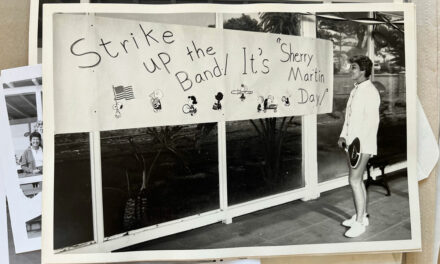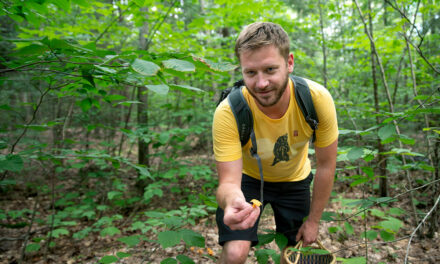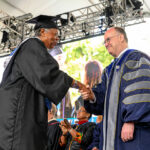
Beyond the Plate
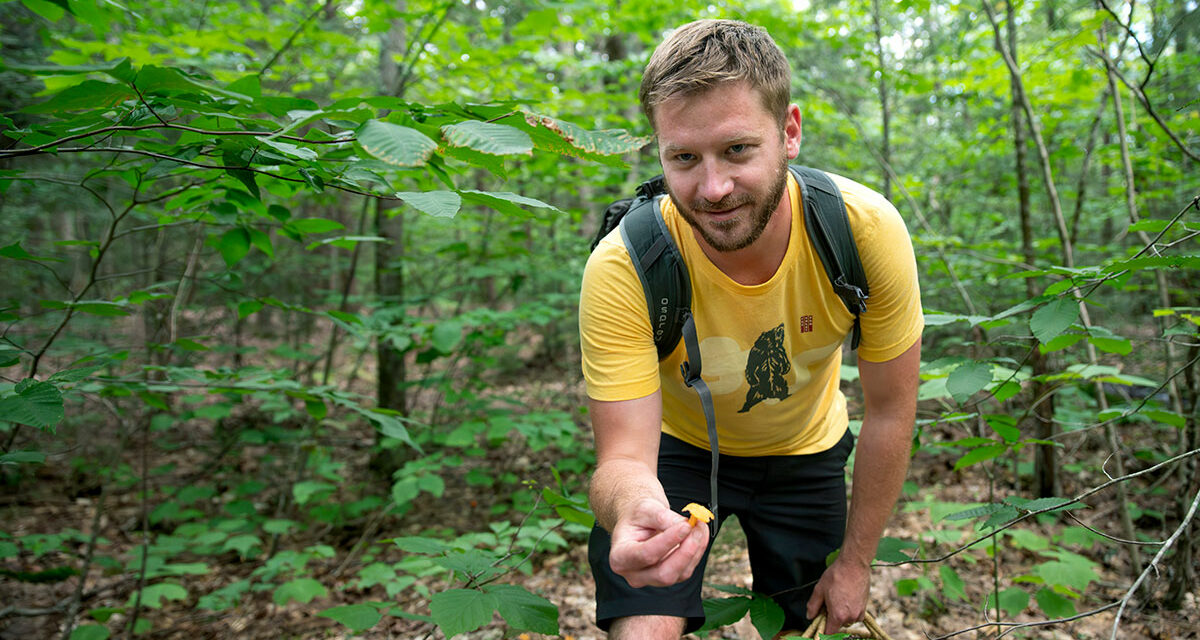
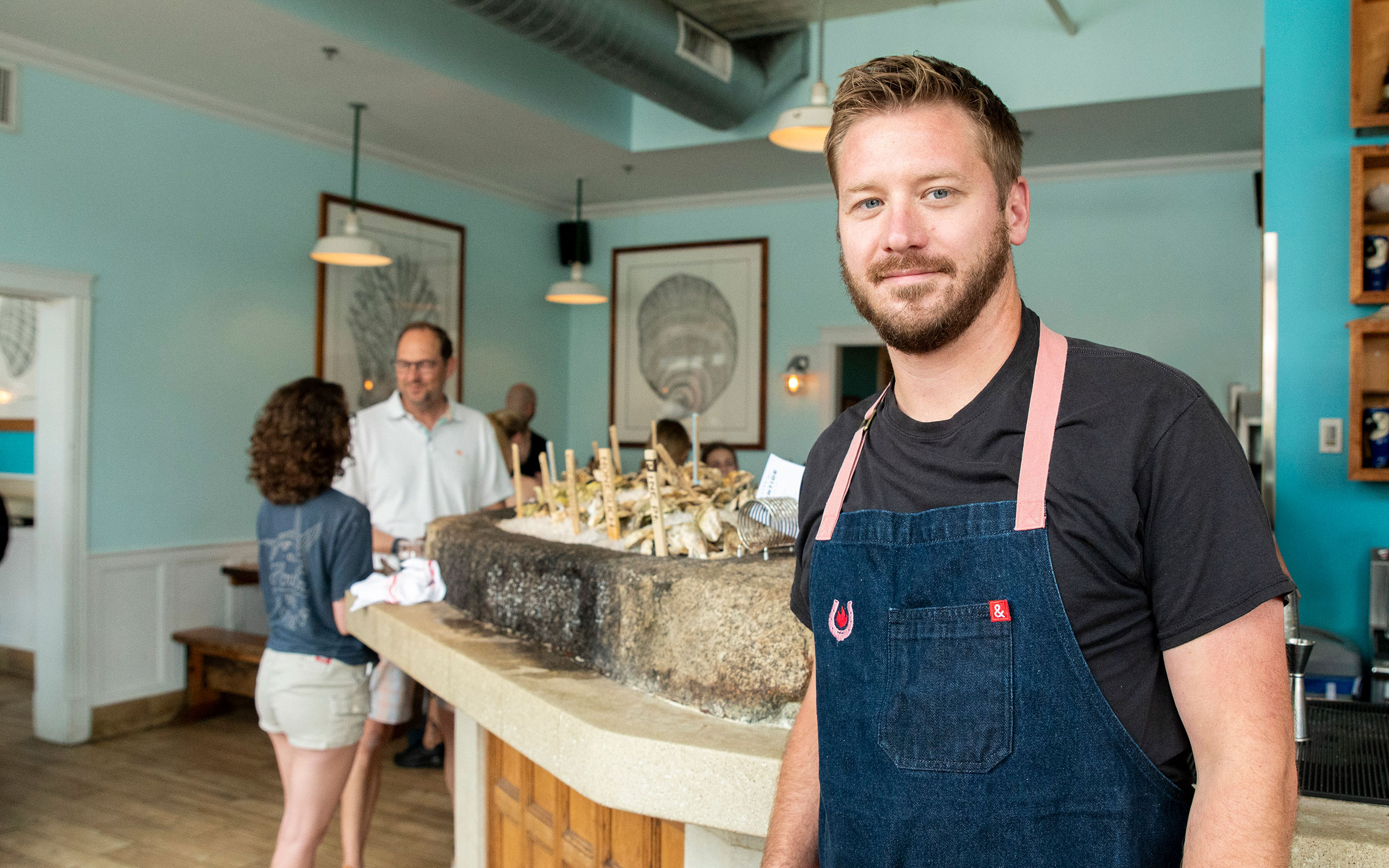
BEYOND THE PLATE
Executive Chef Lars Taylor ’05
BY MELISSA ULSAKER MAAS ’76
Portland, Maine, is a vibrant culinary tapestry, where the salty breeze from the Atlantic mingles with the enticing aromas wafting through cobblestone streets. Long known for offering the freshest lobster and seafood, Maine has gained a national reputation for innovative restaurants, craft brews, and a growing number of award-winning chefs and restaurants. Nearly every list of best restaurants in Portland includes Eventide Oyster Co., and many also include the Honey Paw, both owned by Big Tree Hospitality, where executive chef Lars Taylor ’05 works feverishly behind the scenes.
Like many who love to cook, Lars’ journey began in his mom’s kitchen. “She always made an effort to offer variety,” he recalls. “She makes great salads with homemade dressings and tons of garnishes. I remember liking her enchiladas and bouillabaisse as well.” Hanging out in the kitchen with her was fun, but acquiring food on his own became a bit of a necessity—if he wanted something to nosh on.
“I was five when my sister, Grace, was born, and when my parents were busy taking care of her, I was busy sneaking snacks,” Lars says. “My explorations in the kitchen resulted in a scar on my head from falling off a stool while trying to reach something in the pantry.” His need for snacks, cereal, and easy to grab things expanded into making sandwiches and more complex delights. “I got pretty into it and started reading my mom’s cookbooks and spending time cooking with her.”
His interest in food spread into the classroom at St. Stephen’s and St. Agnes. “I often joke that my greatest, crowning academic achievement was in Mrs. Corner’s second-grade class, when I did a report on how to make poached eggs,” Lars laughs. “She actually saved it for years and used it as an example for the class. I think I was probably more involved in the kitchen than your average eight-year-old.”
Lars is part of a three-generation Saints family. His mom, Patty Herter Taylor ’72, was a boarder at St. Agnes. Later she returned to the school as the director of alumni relations from 1990-2000 and then as an Extended Day teacher from 2018-2020. His younger sister, Grace, attended SSSAS in elementary school. His older sister, Alison Taylor Henry, was a lifer who graduated in 2002 and Alison’s sons, Tommy ’37 and Drew ’34, are in junior kindergarten and second grade.
Lars has fond memories of many of his teachers and his days spent at SSSAS. Patty, Lars, and Alison all had Shirley Keith for English—over a span of 30 years. “I think that’s extraordinary,” Lars says. “She had high expectations which I needed, but she’s a really kind and patient person. I’ll never forget her grammar lessons. I’m a better writer because of her.” Wrestling Coaches David Hooper, Harry Murphy, and Joe Shabelski ’89 taught Lars much more than good wrestling skills. “They gave me the gift of mental toughness and influenced how I view a team and teamwork,” Lars says. “I didn’t consider myself the best wrestler by any means, but they reminded me that the whole is greater than the sum of its parts.” Lars also credits the school for his organizational and leadership skills—and the fact that he can spell, emphasizing that chefs are notoriously bad spellers.
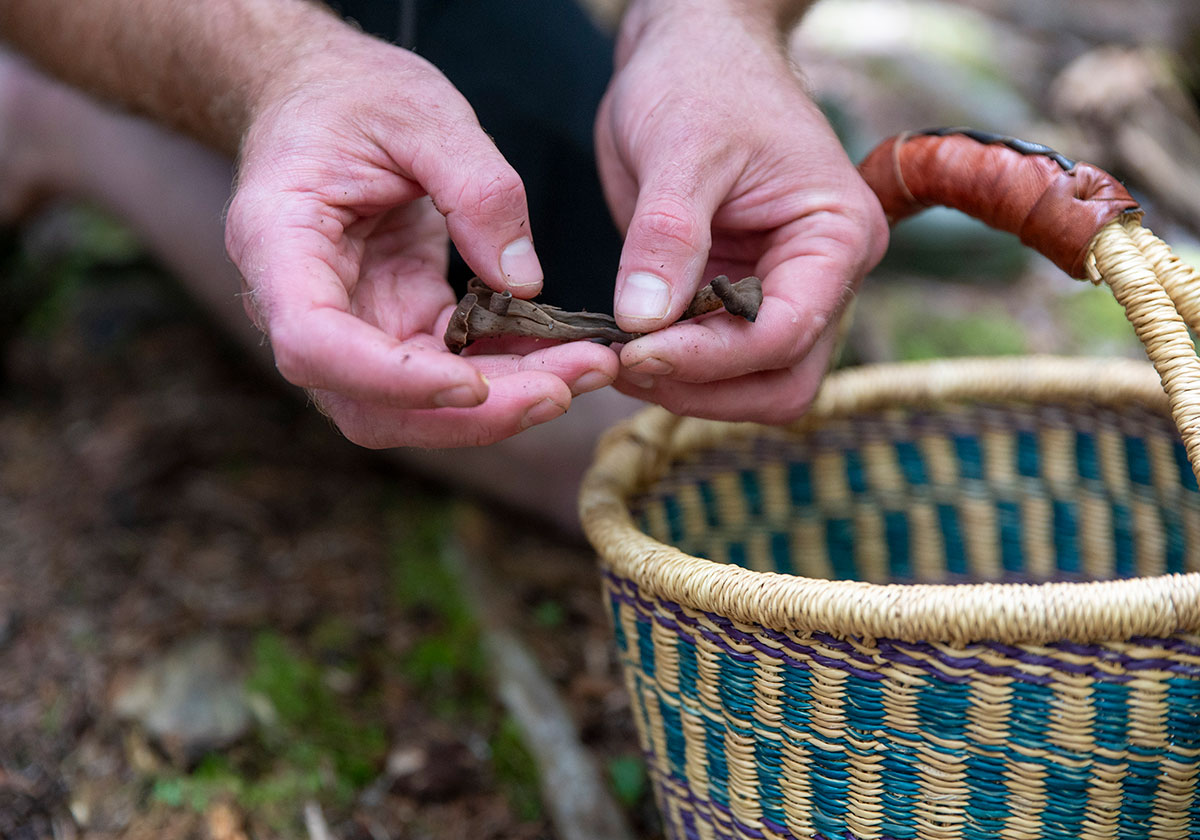
Last August on a visit to Maine, Lars took me foraging in the woodlands that embrace the outskirts of Portland. A wet and humid summer had produced a large crop of mushrooms that was ripe for picking. He was waiting for me, wearing a backpack and holding a woven basket in hand. I had been forewarned of muddy trails and wearing sensible shoes, but the first thing he did was offer me some mosquito spray. As we ventured into the enchanting world where wild fungi grow, Lars talked about his SSSAS science teacher, Anna Vascott. “I think about her field study classes when I’m in the woods. She just was so passionate about science and the natural world, and that spilled over onto me. Foraging for mushrooms requires looking for certain tree types that have a symbiotic relationship with whichever edible mushrooms I’m foraging for.”
We gathered black trumpets and yellowfoot chanterelles, but Lars’s favorite mushrooms are Matsutake. “Matsutake are usually harvested in October,” Lars explained. “It’s a unique and highly prized mushroom in Japanese culture. I can forage them, sell them to the restaurants, and then see them pop up on the menus.” As we walked, I kept my eyes on the ground to avoid tripping. Suddenly I heard Lars say, “Who’d have thought…” I glanced up to see Lars smiling at a bearded man walking towards us, also carrying a basket. Amazingly, and coincidentally, it was Lars’s cousin and boss, Andrew Taylor. Lars introduced us and told me that he and Andrew are “double cousins”—Lars’s mother’s sister is married to his father’s brother, and Andrew is their son. Lars and Andrew were close growing up, like brothers, and share many interests, like foraging, fishing, and cooking. Andrew is also a very talented chef and entrepreneur.
LARS’S BLACK TRUMPET STEAK SAUCE
Ingredients:
2 C Black Trumpets (cleaned)
1/3 C Madeira
1/3 C heavy cream
1/2 C beef stock
1 T tomato paste
4 T butter
2 medium shallots (minced)
2 cloves garlic (minced)
1 sprig thyme
3 T minced chives
Salt and pepper to taste
Directions:
Pan sear steaks. In the same pan used to sear the steaks, add half of the butter, shallots and garlic and a pinch of salt. Cook over medium-low heat until shallots soften and become slightly translucent. Add the black trumpets and continue to cook until most of the liquid the mushrooms drop has evaporated. Add the tomato paste and Madeira and cook down until most of the liquid has evaporated. Add the beef stock, heavy cream, and sprig of thyme and simmer gently until the sauce begins to thicken. Remove the sprig of thyme and whisk in the remaining butter and chives. Season with salt and pepper.
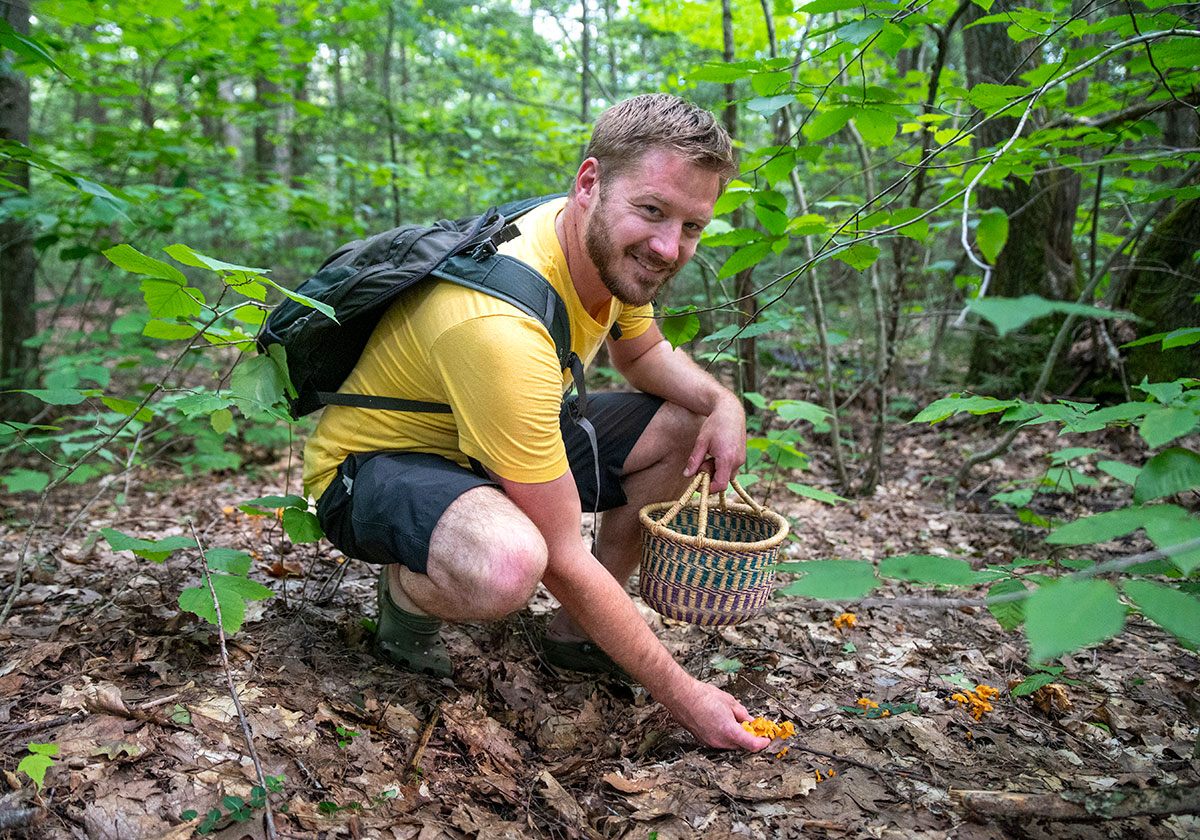
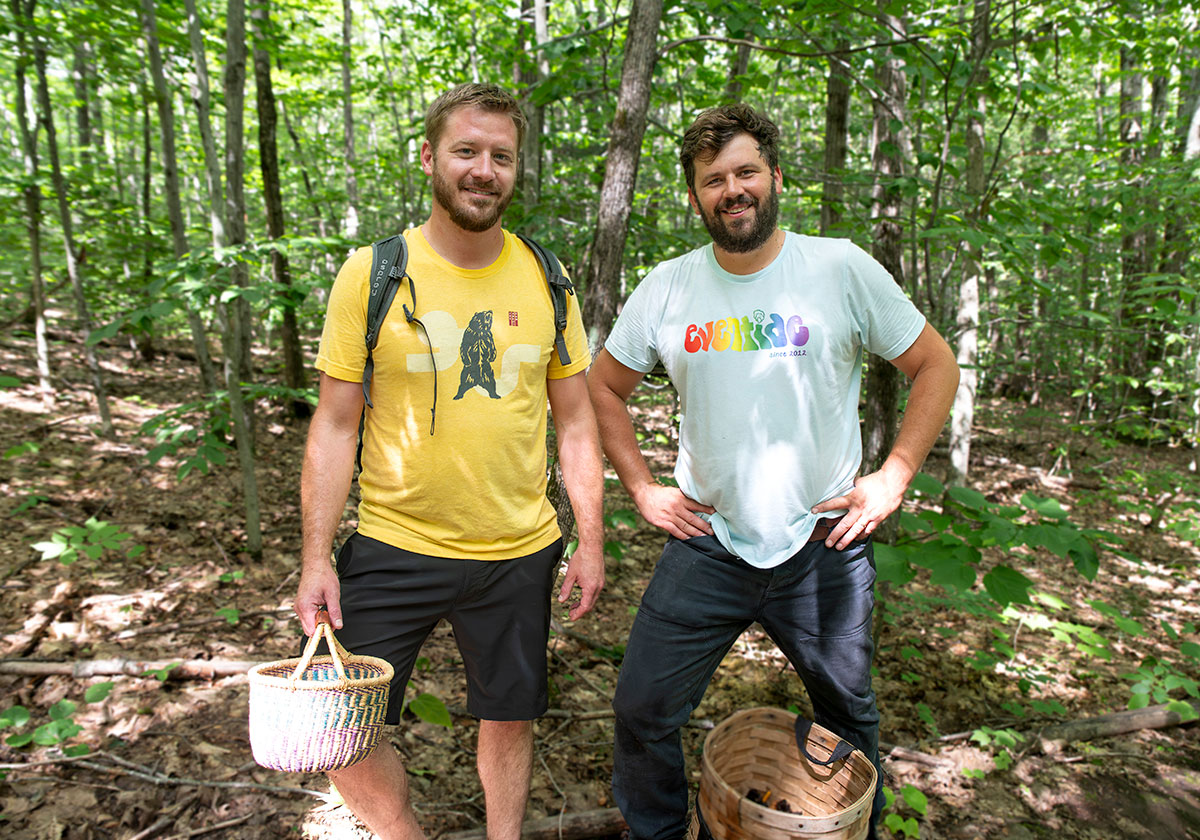
Lars and his “double” cousin Andrew Taylor
Working All the Stations
When Lars left college after a year and moved back to Alexandria, he had no idea how important Andrew would be to his future. He felt directionless in college, but knew he wanted to explore cooking. Hoping for a position in the kitchen, he contacted a connection at Rustico. They only had front of house positions open, so he started as a waiter. It wasn’t long before a position in the kitchen opened up and they gave him a shot. “I worked there for two years—working all the stations—and learned quite a bit,” Lars recalls. He really enjoyed it and decided it was the right career path for him, so culinary school was the next logical step.
In 2012 while Lars was at the New England Culinary Institute (NECI) in Vermont, Andrew and his partners, Arlin Smith and Mike Wiley, were forming Big Tree Hospitality, buying Hugo’s restaurant, and opening Eventide Oyster Co. next door. They thought Eventide would be a small New England Oyster bar, maybe serving 40 people a day. But it became much more than that. “It was pretty funny,” Lars recalls, laughing. “Andrew called me and he was sort of panting while he spoke, ‘Do you think you can come up here and work?’ I asked what was going on and discovered he was talking to me while he was on the line making lobster rolls.” But Lars was still finishing school.
A year later when Andrew reached out again, Lars was ready. With memories of clamming, gathering crabs, and cooking with Andrew during the family summers at Cape Cod, he moved to Portland and started work the next day. He and Andrew recreated the chowder they made on the Cape, with a few tweaks, and put it on the Eventide menu. In 2015 Big Tree Hospitality opened Honey Paw and they asked Lars to be the opening sous-chef.
“It felt great,” Lars says. “When I moved to Maine, I made it my priority to put my head down, work hard, and prove myself. Earning the sous-chef position was the start of my upward progress.” After a year as sous chef, the chef de cuisine (CDC) left and Lars took over and stayed for five years before briefly leaving. “I left the company to pursue a new opportunity,” Lars explains. “After six months Andrew approached me about coming back in a larger role, as the executive chef for Big Tree Hospitality.
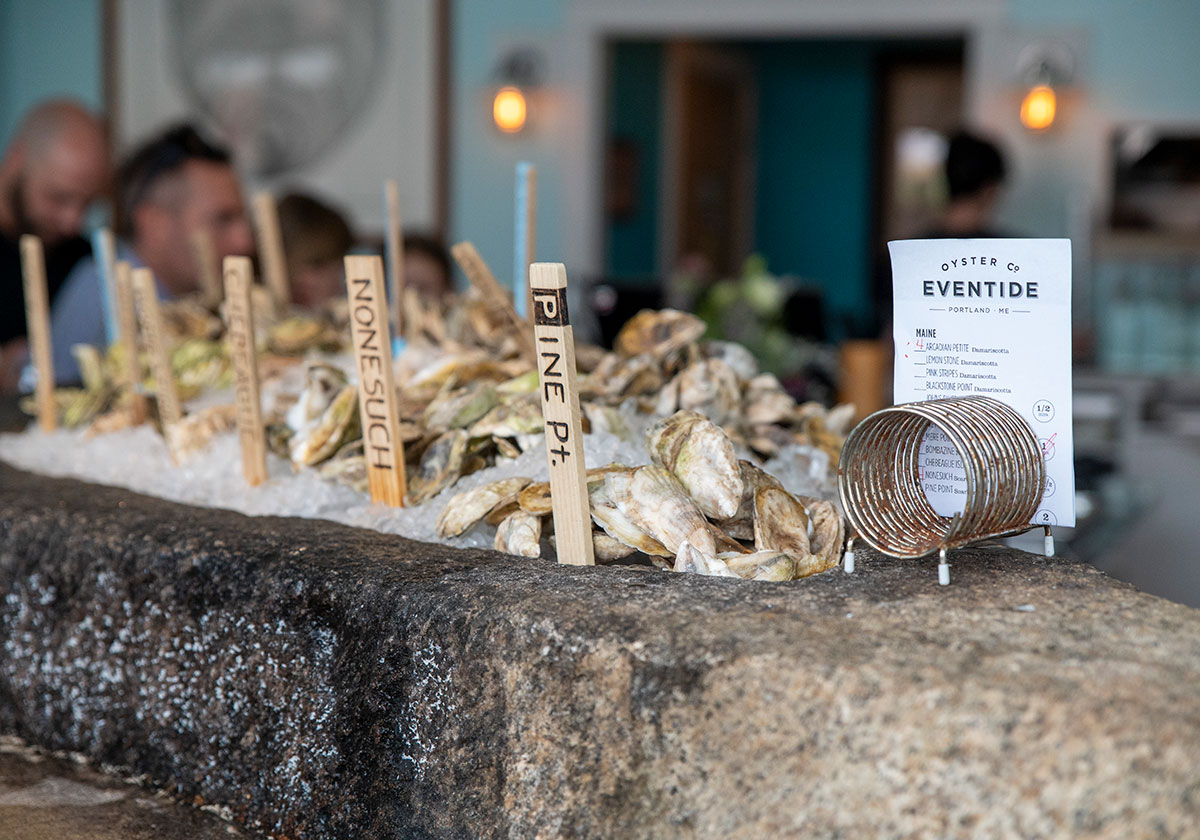
Putting Out the Fires
In 2017 Big Tree Hospitality expanded into Boston, opening another Eventide in Fenway. As executive chef, Lars was brought in to oversee everything that goes on in the background behind the scenes of the three restaurants (Hugo’s didn’t survive the pandemic), three markets, the catering department, and a commissary kitchen (Big Tree Hospitality’s huge kitchen in Biddeford, where they prepare a wide variety of products that they distribute to the restaurants and markets). “These operations include research and development of menus, oversight of food cost, staffing, and management of the kitchen leadership teams,” Lars says. “As CDC of the Honey Paw I was cooking every day. Now I cook sometimes, but mostly it’s about meetings and bureaucratic oversight, which is good for me because I’m learning all aspects of how a restaurant operates—and there’s a lot to it.”
No two days are alike for Lars. Physically he has a lot of ground to cover, bouncing between the locations to go wherever he is needed. “We have an incredible management team, so a big piece of what I do is providing ancillary support,” Lars says. “I could be doing anything from filling in for a sick cook at a market making breakfast sandwiches to doing a five-course meal on a private island to working on our new food cost management.” As Lars’s wife, Zoe, says, “He just goes where the fire is for that day.”
Zoe and Lars met when she joined the waitstaff at the Honey Paw. They went on a couple of dates, but Lars was consumed with successfully opening the restaurant. Later, he realized he’d been missing out and the rest is history. They were married during the pandemic in a grotto near Bar Harbor—a magical memory. They have a two-year-old son, Luke. Zoe is now a manager with the company, buying wine for both Eventide and the Honey Paw. They have a mutual understanding of the demands of the restaurant business, which can be all consuming.
The biggest and constant challenge for Lars is staffing—a problem that intensified during the pandemic—which requires both hiring and managing personalities. They’ve explored all avenues of getting the word out about open positions. They advertise on their restaurant websites and they have offered bonuses to current employees who recruit people, but it’s a constant struggle. Lars believes success in the restaurant business comes with the right frame of mind. “You need to work diligently and have a positive attitude,” he says. “Someone may have worked at multiple Michelin Star restaurants but if they have a bad attitude, it is really toxic and can spread fast. Inversely, someone with no experience who has a really positive attitude can be infectious and lift the whole team.” Another major challenge is the seasonality of the restaurants. “We need to do enough business in the summer to cushion ourselves for the cold, slow winter months,” Lars says. “In many ways it’s easier to manage when it’s really busy than when it’s really slow. When it’s busy everything runs like clockwork with no time to think. When it’s slow it’s harder to keep everyone focused.”
“It’s the little moments of just seeing growth in the people working under you, just seeing them take the next step up. That’s really rewarding for me— seeing people learn and grow.”
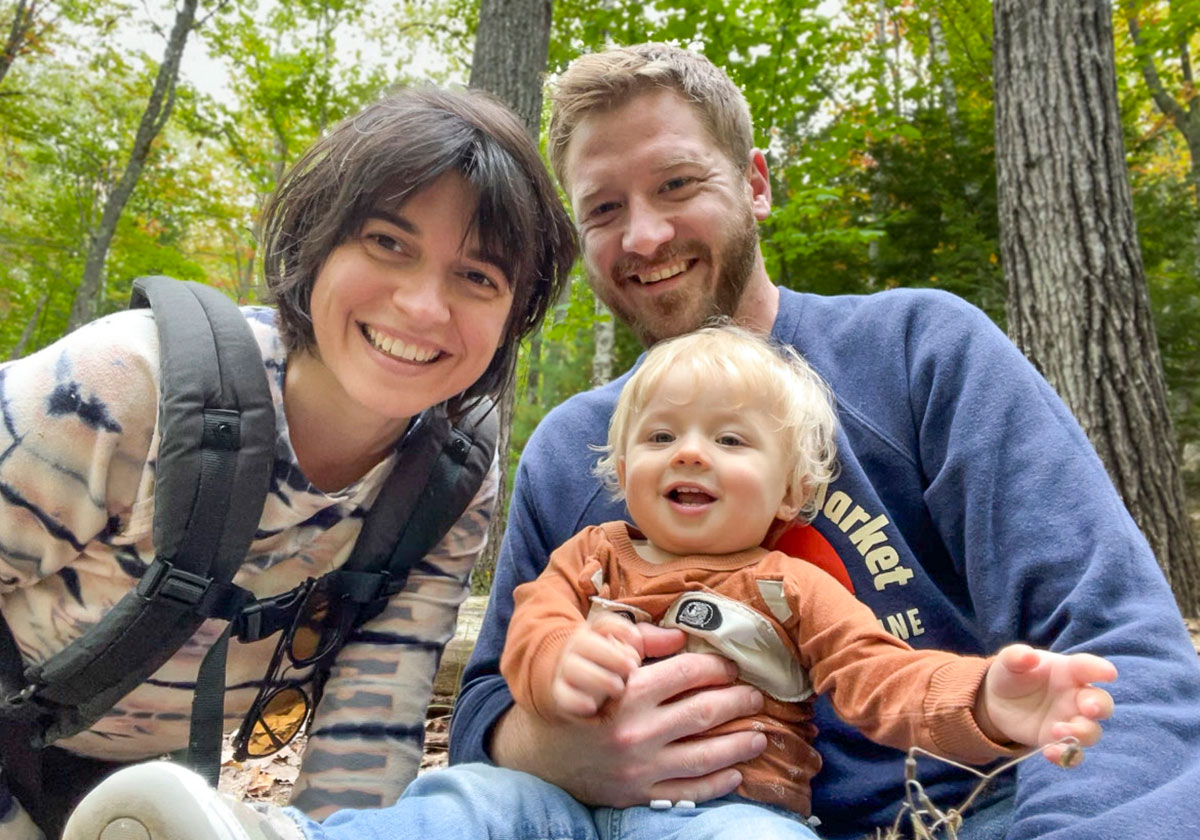
The Taylor family: Zoe, Lars, and Luke
Lars is articulate, thoughtful, and humble. He’s somewhat shy and reserved, but definitely a people person who really cares about everyone who works for him. In 2017 the Big Tree Hospitality team won a James Beard Award in the Best Chef: Northeast category. They were also nominated in 2015, 2016, and 2018. According to the James Beard Foundation, Best Chef nominees must have worked for at least five years as chefs and “have set new or consistent standards of excellence in their respective regions.” For Lars, getting the nominations and winning was great, but it’s not what really inspires or drives him. “It’s the little moments of just seeing growth in the people working under you, just seeing them take the next step up,” Lars reflects. “That’s really rewarding for me—seeing people learn and grow.”
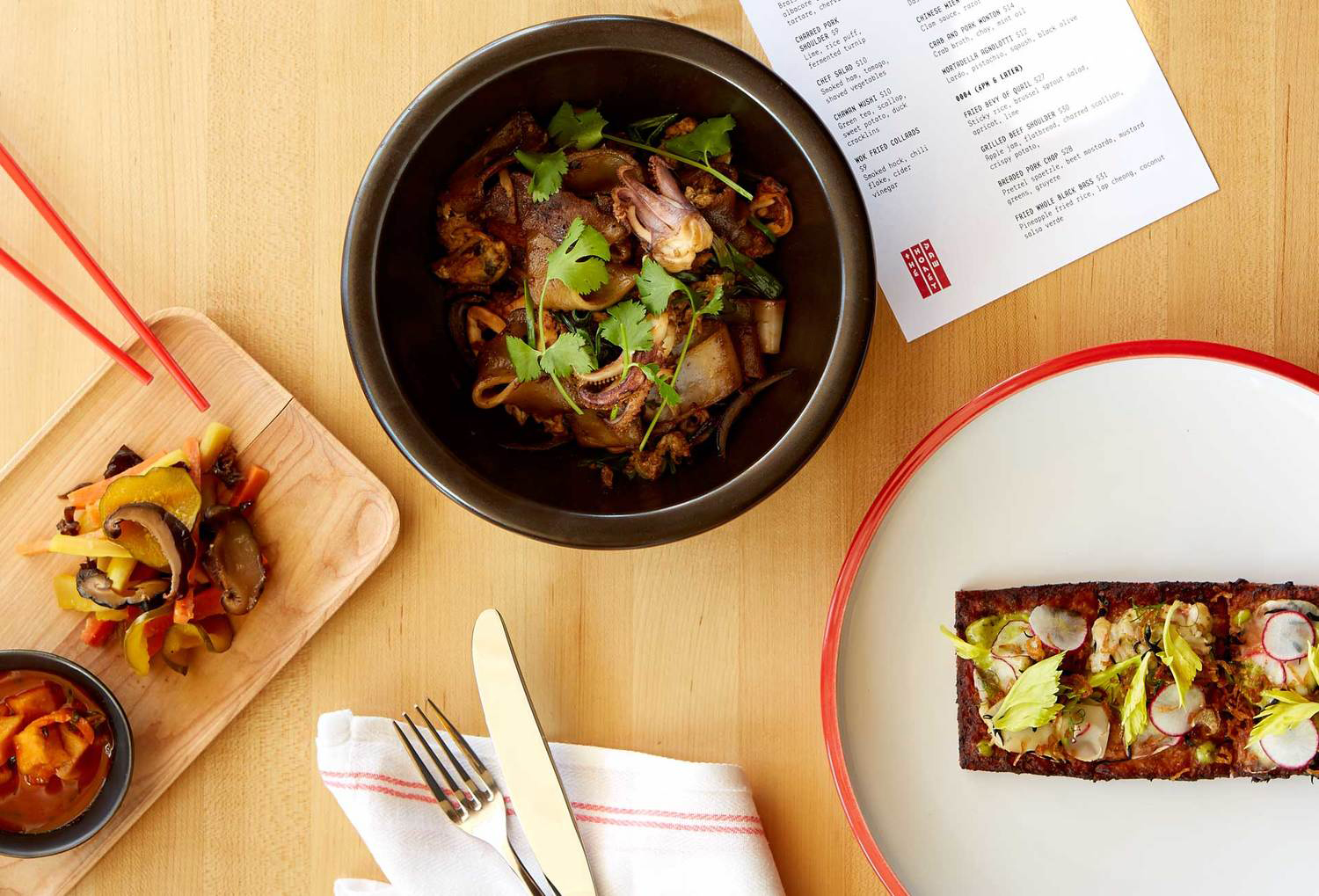
The Honey Paw (Photo by Zack Bowen, Knack Factory)
The Magic of Food
Although there are staples on the menus none of the chefs can touch, like the brown butter lobster roll and chowder at Eventide, the chefs change the menus almost on a daily basis, showing their creativity through the specials. Big Tree Hospitality works with several farms that deliver weekly to their commissary kitchen, bringing them whole sides of beef, whole pigs and lambs, and fish like a 500-pound bluefin tuna. The commissary butchers them and sends the product out to the restaurants, depending on needs.
The Honey Paw was started as a “noodles without borders” restaurant, but took a turn towards Southeast Asian flavors under the influence of one of its chefs. One of the dishes the restaurant is known for is their take on khao soi, one of Lars’s favorite dishes from a trip to Thailand. “Khao soi is usually beef or chicken,” Lars says. “But we decided to smoke and braise a whole lamb and use it to make this delicious noodle dish. I think it’s cool that people who haven’t heard of khao soi now know about it and can try it at other places as well.”
Lars’s travels have enabled him to learn about a variety of cultures and cuisines. In addition to exploring the culinary delights of Thailand Lars visited Vietnam where he enjoyed bánh xèo, pho and “so many amazing noodle dishes,” including cha cá lã vong, cao lau, mì quang, bún cha, bún bo nam bo, and bún bo hue. In Greece he would stop for anything shaved off a spit—gyros and souvlaki—and delighted in whole grilled fish. In Sweden he was into reindeer tacos and smoked fish. Lars doesn’t really have a favorite food, because why would you when there’s so many foods to try. He loves Indian food because of the complexity and eating the dishes with roti and naan. He loves Sichuan food because of málà, the sensation of using chilis for heat and peppercorns for numbing. He rarely eats fast food, but does like Bojangles and Cook Out in North Carolina, and if he’s out West he tries to make it to IN-N-OUT burger. Right now, his go to food when he’s on the run is a bánh mì.
When he’s not putting out fires at work, Lars loves spending time with his family. Their house is on a lake, so he thrives on kayaking, fishing, swimming, and ice-fishing and skating in the winter. He spends a lot of time with his dog in the woods wandering and foraging. And he loves being with his staff, even off the clock. “Our company joined a boat club last year and I’m one of the captains,” Lars says. “I have the privilege of being able to take our staff out on Casco Bay, whether it be for island hopping, fishing, or even a wine tasting.”
And the main reason Lars loves cooking? Because he loves eating, and food offers a way to bring people together while also allowing him to express himself.
Food Glossary
Khao Soi: A Thai coconut curry noodle soup.
Bánh Mì: A Vietnamese baguette filled with savory ingredients, like meat, cucumber, pickled carrot or daikon, cilantro, and fresh chilis with pâté, butter, mayonnaise or soy sauce.
Bánh Xèo: A Thai crêpe or made from a basic blend of rice flour, turmeric, and coconut cream, along with other ingredients.
Pho: A Vietnamese soup dish consisting of broth, rice noodles, herbs, and meat.
Cha Cá Lã Vong: A Vietnamese fried fish dish with turmeric and dill that comes with rice noodles, peanuts, fresh dill, toasted sesame crackers, and a pungent fermented shrimp dipping sauce.
Cao Lau: A Vietnamese noodle dish consisting of pork and greens on a bed of rice noodles made from rice which has been soaked in lye water.
Mì Quang: Vietnamese flat rice noodles, served in an intensely flavored broth with a medley of fresh herbs and vegetables. A variety of tasty toppings include pork belly, whole shrimp, toasted peanuts, sesame rice crackers, and hard-boiled quail eggs.
Bún Cha: Famous Vietnamese caramelized pork meatballs served over noodles with nuoc cham sauce and fresh vegetables and herbs.
Bún Bo Nam Bo: A popular street food in Hanoi, it’s a warm noodle salad made with thin rice vermicelli noodles served with marinated stir-fried beef.
Bún Bo Hue: A spicy Vietnamese noodle soup with beef and pork with lemongrass, shallots, and sate (chili oil).

